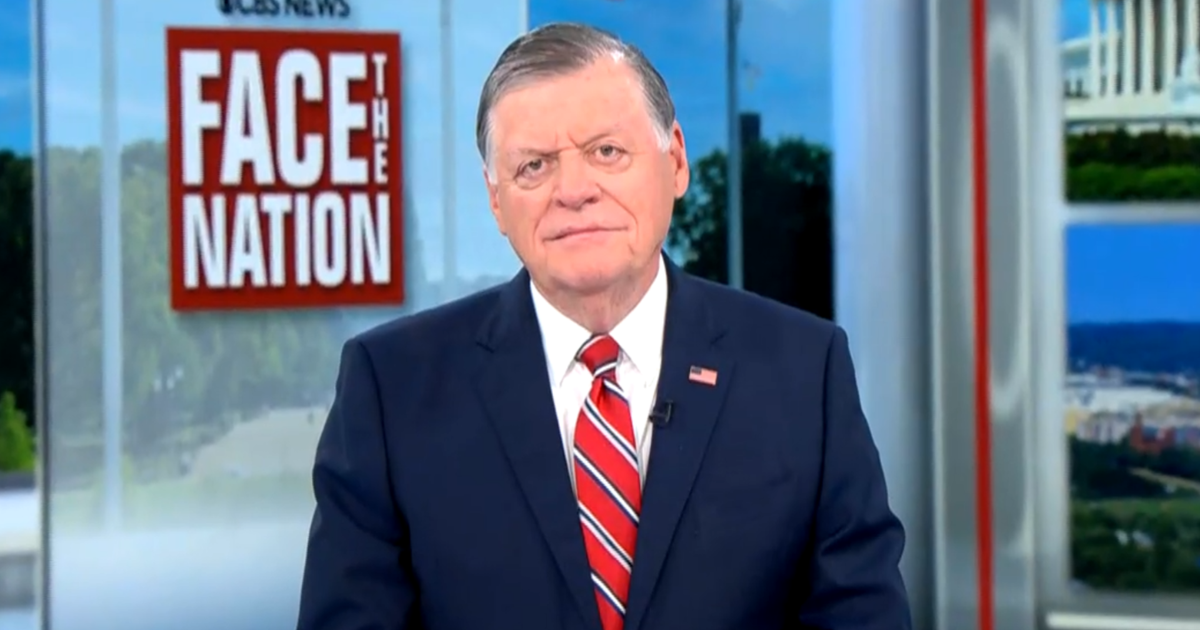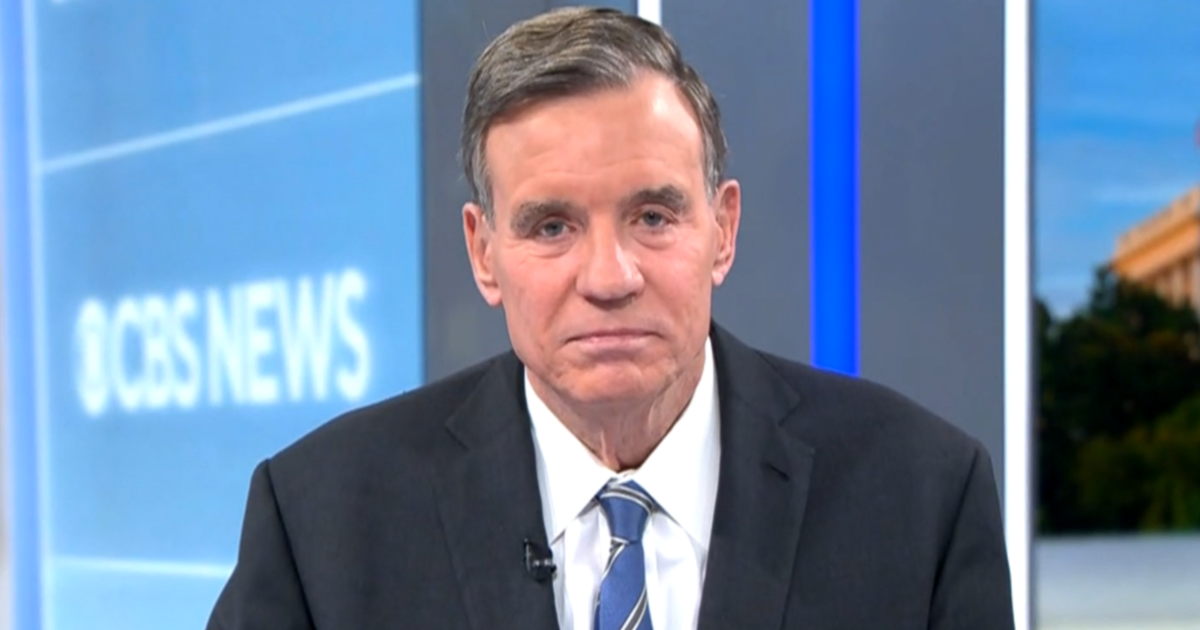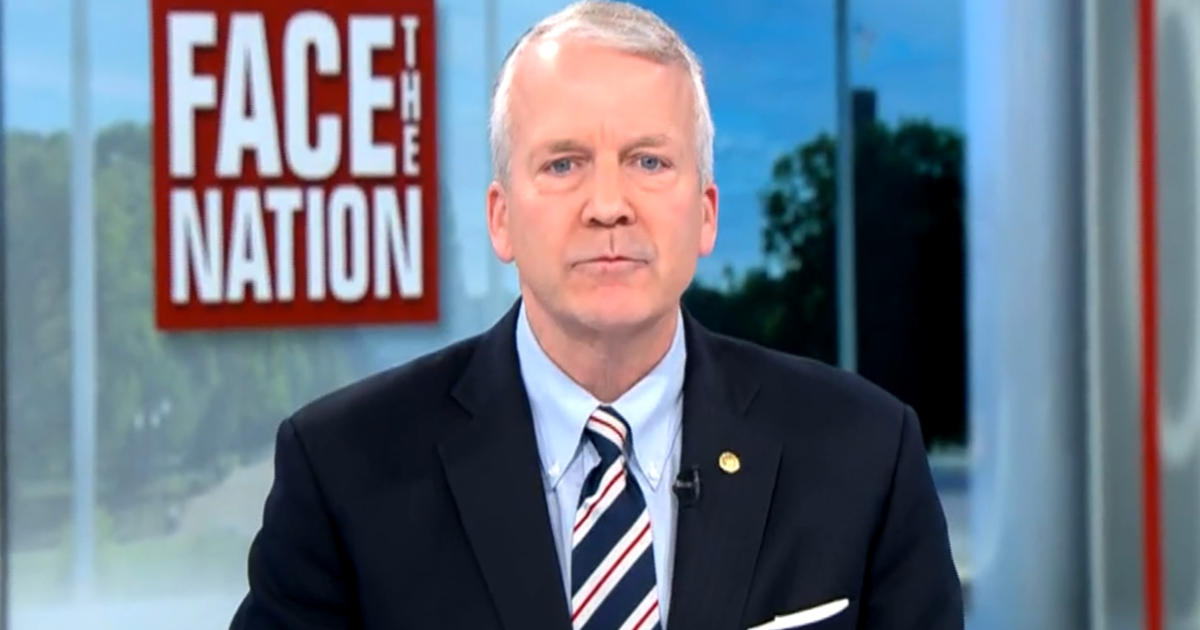Transcript: Scott Gottlieb discusses coronavirus on "Face the Nation," October 25, 2020
The following is a transcript of an interview with former FDA Commissioner Scott Gottlieb that aired October 25, 2020, on "Face the Nation."
MARGARET BRENNAN: We're back now for our weekly check in with Dr. Scott Gottlieb. He joins us from Westport, Connecticut. Good morning to you.
DR. SCOTT GOTTLIEB: Good morning.
MARGARET BRENNAN: You warned us last Sunday that we are entering what could be the hardest part of this pandemic as we get into these colder months. We're seeing these infections in hospital- hospitalization rates really jump. What- where are we on the trajectory as you see it?
DR. GOTTLIEB: We're at a dangerous tipping point right now, we're entering what's going to be the steep slope of the curve of the epidemic curve. We know what that looks like from the spring. We know it looks like from this summer. These cases are going to continue to build. There's really no backstop here. I don't see forceful policy intervention happening any time soon. We have a moment of opportunity right now to take some forceful steps to try to abate the spread that's underway. But if we don't do that, if we miss this window, this is going to continue to accelerate and it's going to be more difficult to get under- under control. Now in- in a lot of parts of the country, it doesn't feel really, really bad right now because it's a little bad everywhere. You don't have regions where it's extremely dense in any one region like we did when it was epidemic in New York or epidemic in the south outside of states like Wisconsin or Iowa. Most states just have a lot of spread, but most states aren't at the point where they're extremely pressed right now. That's going to change over the next two to three weeks. I think things are going to look much more difficult. And so we need to take some steps right now. There is no public support for shutdowns--
MARGARET BRENNAN: Right.
DR. GOTTLIEB: --nationally like we did in the spring. That's not going to happen. So we need to reach for other measures.
MARGARET BRENNAN: Well, you heard the national security adviser to the president say the focus is on just protecting the vulnerable. The chief of staff, Mark Meadows, said on CNN, We're not going to get control of the pandemic. So, is the point here just buckle up?
DR. GOTTLIEB: Well, I think that's what they're saying, but I don't think that's what we should be doing. There's things that we can do to slow the spread. I mean, a national mask mandate can be put into place. It doesn't need to be backed up with fines or- or stringent enforcement. We have other requirements that we expect of a civil society that we enforce with, you know, political jawboning, leadership. We give people warnings at first. So, I think masks are one thing that we could be doing. We need to look at targeted mitigation, starting to close congregate settings where we know spread is happening. Remember, even if we get a vaccine this year and I'm on the board of Pfizer one of the companies that's pretty far along in developing a vaccine, even that- if that becomes available this year and we get shots into the arms of the first tranche of patients, which is likely to be the elderly and health care workers, they're not going to have protective immunity until 2021 at some point in 2021--
MARGARET BRENNAN: Yeah.
DR. GOTTLIEB: --because it takes time for that vaccine to kick in and you need two doses. So this vaccine is not going to affect the contours of what we're going to go through, which is going to play out in the next two or three months right now.
MARGARET BRENNAN: And the CDC has said that masks are sort of the best plan for the moment. On that point, last week you told us that if someone's going to vote in person, for example, they should have a high quality mask. You said that meant not a cloth mask. Walk us through what the safest masks are.
DR. GOTTLIEB: Well, remember, the masks serve two purposes. One is to protect other people from you. So if you're asymptomatic or pre-symptomatic, if you have a mask on, you're less likely to expel respiratory droplets that can infect other people. The other purpose is to provide you some measure of protection if, in fact, you're around people who are infected. So if you want to mask to afford you some protection from other people, quality matters. A cloth mask, may be 10% to 30% protective, a surgical mask,a level two or level three, surgical mask, procedure mask, maybe about 60% effective. An N95 mask or an equivalent like a KN95 mask, which is the Chinese equivalent or what we call an FFP2 mask, which is a European equivalent to an N95 that could be 90-95% protective. So if you want to mask to afford you a level of protection, wear a higher quality mask. If you only can get a cloth mask, thickness matters and cloth masks with polyester in them and a combination of polyester and cotton do better.
MARGARET BRENNAN: Thank you. At the White House, masks are not mandatory, as we discussed with the national security adviser. And we know the vice president had close contact with staffers who have tested positive. The CDC advises everyday people to isolate, to quarantine if they have that kind of contact. The vice president is not doing it. Is he putting others at risk by campaigning?
DR. GOTTLIEB: Well, look, he could be closely monitored, so the short answer is yes, but you can closely monitor the vice president. I would understand why they wouldn't want to quarantine the vice president, but they need to be very explicit about what they're- about what they're doing, and the risks that they're taking. He should be wearing a high quality mask an N95 mask at all times. He should be distancing wherever possible. They should be serially testing him. And there's ways to try to provide a measure of protection around the vice president or protect other people from the risk of the vice president does contract the infection, but they need to be very explicit about the risk that they're taking. I think everyone right now in the White House should be wearing a mask. They have an obligation to protect the vice president, the president, and not introduce a virus into that setting. They certainly have access to proper protective equipment, unlike a lot of other essential workers that don't have that kind of access. They have access to serial testing as well. Finally, one- one last point. One thing they might consider for the vice president is using one of these antibody drugs as a prophylaxis. There's a belief that these drugs would work well in that setting. There's some risks associated with it. But you obviously do not want the vice president to contract this infection.
MARGARET BRENNAN: Right. And he would have access to something like that, whereas you and I would not have access at this point. On the vaccine, I- I do want to quickly get you on this, because Operation Warp Speed, the administration's effort announced this week their timeline. They say by the end of 2020, all vulnerable people will be vaccinated. By the end of January, all seniors will be vaccinated. By March or April 2021, they should be able to vaccinate any American. And the head of this Dr. Moncef Slaoui said he's confident by June everyone in the US should be immunized. Is that realistic?
DR. GOTTLIEB: Well, I think it's aggressive. Look, this is first based on a presumption that these pivotal trials that are underway by Moderna and Pfizer actually read out and demonstrate that these vaccines are safe and effective. We all hope for that. We believe that's going to be the case based on the early data. But you don't know until you turn over the card on those trials, assuming things go well, there is a chance that they could roll out this vaccine in time to get the elderly population in the United States vaccinated, the first dose of the vaccine. But remember, they need to not wait a month to get the second dose. And there's a period of time of a week or two until they have protective immunity from the vaccine. So you're looking really at 2021 till the vaccine really kicks in terms of the entire population. I think it's unrealistic to think that we're going to have a vaccine widely available for general distribution and authorized by the FDA for mass distribution until--
MARGARET BRENNAN: Right.
DR. GOTTLIEB: --probably the second quarter of 2021 later on in the second quarter.
MARGARET BRENNAN: Understood. Thank you, Dr. Gottlieb. We'll be back in a moment.



